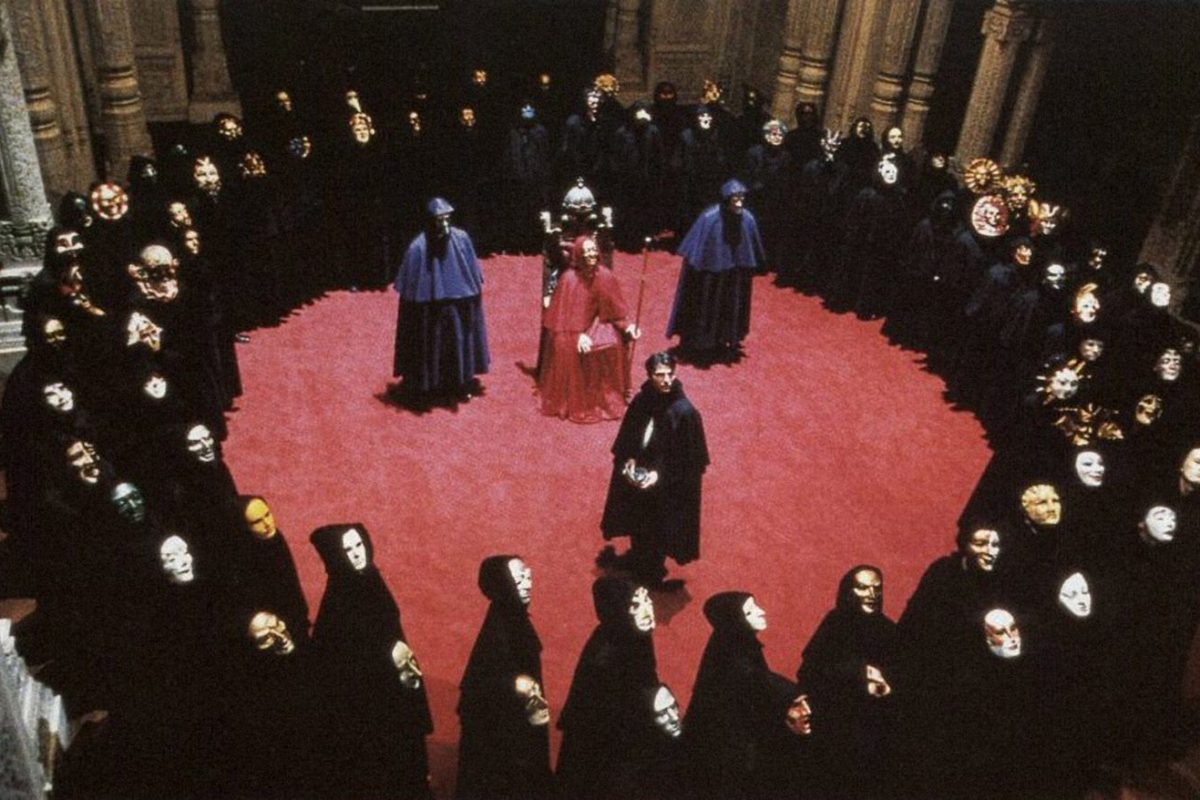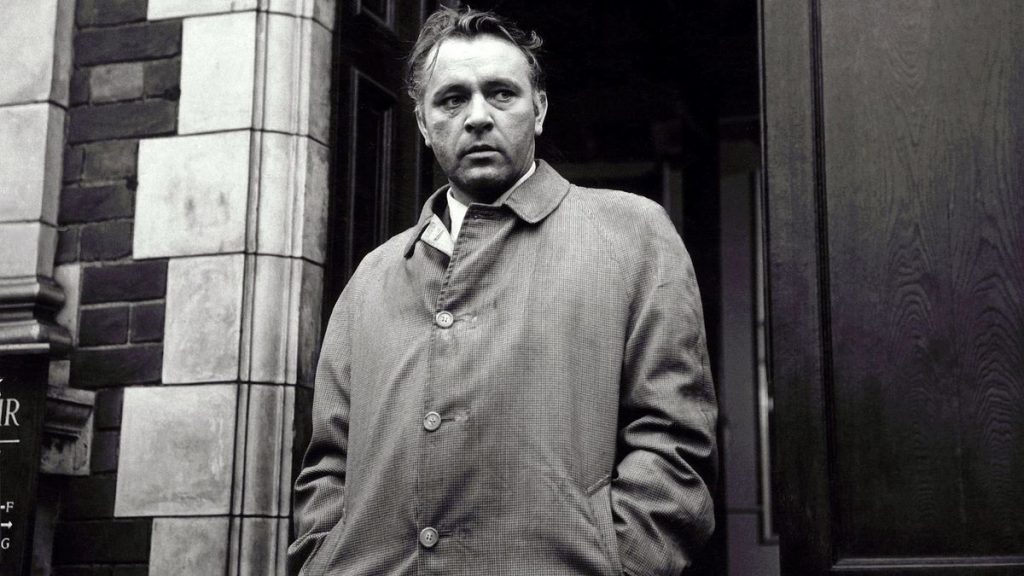It has been 25 years since Eyes Wide Shut was released to theaters. The final film from Stanley Kubrick, years in the making, proved divisive upon release: some praised it, some savaged it, many were left baffled by it. It proved a hit, but for several years afterwards, much (if not most) of the conversation surrounding it had to do with the controversy around how it was censored or how its prolonged production played into the collapse of stars Tom Cruise and Nicole Kidman’s marriage, rather than the film itself.
But, as with almost every movie Kubrick ever made, its audience eventually found their way to it, and today Eyes Wide Shut is rightly regarded as a triumphant final bow, with many ranking it amongst the director’s best. Thanks to its yuletide backdrop, it’s even become something of a new Christmas classic, at least among households where Criterion Collection DVDs make for good stocking stuffers (hence why it feels more appropriate recognizing its quarter-century anniversary in December, as opposed to June, when it actually hit theaters).
But, like a handful of other Kubrick films, it has also taken on a lot of outside baggage because of how it mirrors larger cultural movements while feeding into certain widespread conspiracy theories. Much of this is patently ridiculous, but some of it is… unsettling, to say the least.
We’ll just get it off the bat straight away: no, Eyes Wide Shut is not actually about any real world figures. Nor is it an expose of any made up QAnon bullshit like Pizzagate. It is a largely faithful, though modernized, adaptation of a 1926 Vienezze novella (Traumnovelle, by Arthur Schnitzler) that Kubrick discovered as a young man and which explores a specific type of sexual neuroses and—to use an tired phrase—masculinity in crisis that he’d previously touched on in other films, filtered through the logic of both dreams and cable television-style softcore erotica.
Not that this has swayed any of the cranks inclined to believe Kubrick was attempting to deliver a message to masses. There’s still lots of people who believe he helped stage the moon landing, as evidenced by a NASA sweatshirt worn by a character in The Shining. (Speaking of outlandish theories and The Shining, there’s a whole-ass documentary about them.)
Kubrick is a lightning rod for this type of imprinting because of the way he grafted groundbreaking technology onto surrealist, often Freudian imagery. It’s a potent combination, one that makes people miss the forest for the trees. David Lynch is an incredible craftsman, but there’s an intentional uncanniness to his work that lets people know not to what they’re seeing literally, while James Cameron is so focused on making his fantastical stories as photorealistic as possible that he’s not at all concerned with psychological or thematic ambiguity. Kubrick has always threaded that line, which is what makes his work so endlessly intriguing, while also allowing the dumbest people amongst us to convince themselves that every frame is filled with esoteric meaning. These same people also tend to confuse Kubrick’s obsessive artistic temperament with perfectionism, which leads them to twist themselves into pretzels to explain away the myriad of simple continuity errors that every film, even and especially Kubrick’s, contain.
Which is not to say there’s nothing to some of these theories.
Obviously, the sex cult material in Eyes Wide Shut feels especially potent today, in a post-Me Too world where powerful men were either exposed for previously unknown acts of sexual impropriety or condemned for ones already publicly acknowledged but overlooked. (Can you imagine how Eyes Wide Shut would play today if it had starred Woody Allen, as Kubrick originally wanted?)
And, as with other examples throughout Kubrick’s filmography, there are bits of trivia that certainly raise eyebrows—in this case the fact that real-life reporter Larry Celona, who served as a consultant on Eyes and whose byline appears in a newspaper article announcing the death of an important character, not only ended up breaking the news of Kubrick’s passing, but also that of Jefferey Epstien.
(Here’s a bone for the QAnon crazies: Celona also was first to report on the death of their beloved JFK Jr.)

A cursory Google search turns up dozens of articles about the creepy ways the film mirrors what we know of Epstien’s network, although one thing many of them don’t touch on is how banal the real-life atrocity is compared to Kubrick’s version. If you ever seen the pictures from those Epstien parties, such as the damning one with Prince Andrew and an underage victim, they’re just a bunch of schlubby rich guys in business casual hanging out in badly lit luxury apartments. This isn’t to dismiss the well- documented charges brought against them or to say weirder stuff didn’t go down, only that it’s a far cry from the unholy mass that occurs in Eyes Wide Shut.
But then again—even that isn’t necessarily what it seems. Kubrick’s film at least hints that the secret sect at the heart of the story is nothing more than a bunch of bored rich dudes playing dress up. Yes, it is heavily implied that they ritualistically murder a young sex worker who tries to help him. But later, it’s explained, via Sidney Pollack’s rich, dues-paying cult member, that this wasn’t the case; that it was all just for show, a “charade… a play-acted, take-me, phony sacrifice.”
Whether or not the cabal did actually murder the girl, she is still their victim and they are still responsible for causing her death. Whatever the truth about their order, they, like Epstien, like Weinstein, like Diddy (allegedly), like other big shots, are guilty of sex trafficking. The question—one that Kubrick leaves up in the air, but which those who read his fiction as fact are incapable of even considering—is whether it goes any deeper than the time-honored tradition of men, which means indulging their base appetite for sex and power, no real black magic or Satanic rites required.
To try and find an answer within the text robs it of its mystery. So to do this crusade to prove that Kubrick was actually trying to warn us, man! Both are inherently anti-art approaches, which leads me to believe that if Kubrick were alive today he’d have had zero time for them.
Or maybe he’d be ringing in the holidays with Cruise and Kidman and JFK Jr. and all the other Satanists over a cup of eggnog and fresh human sacrifice. Who’s to say?
“Eyes Wide Shut” is streaming on Paramount+.



